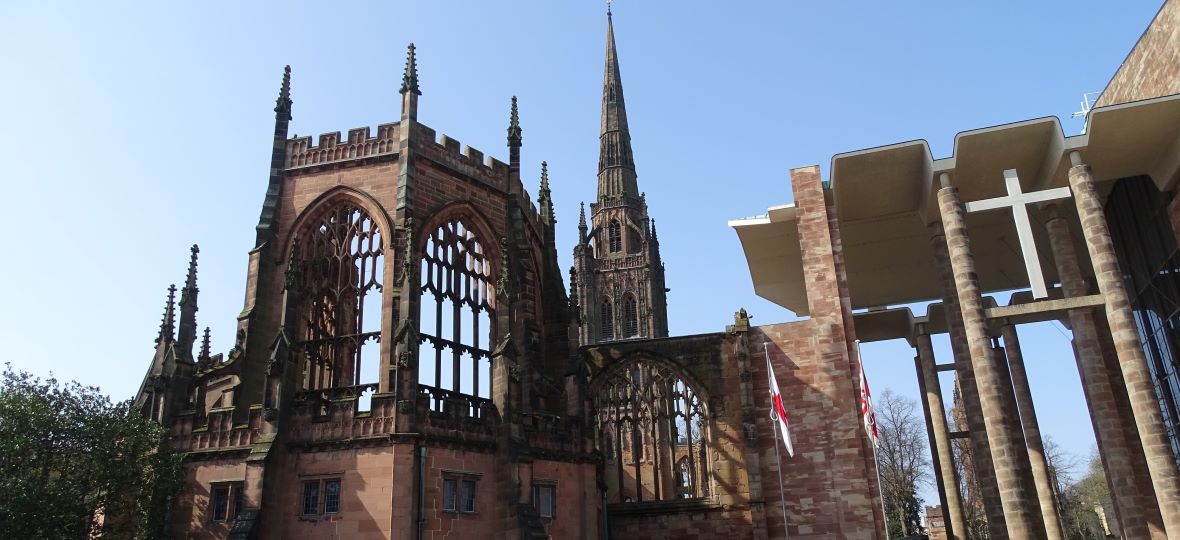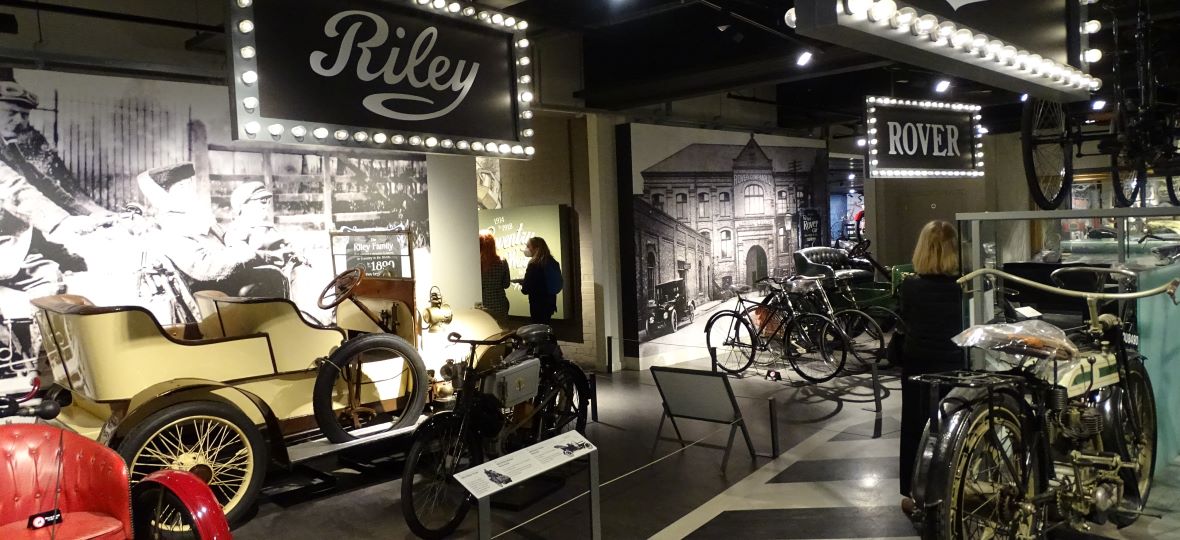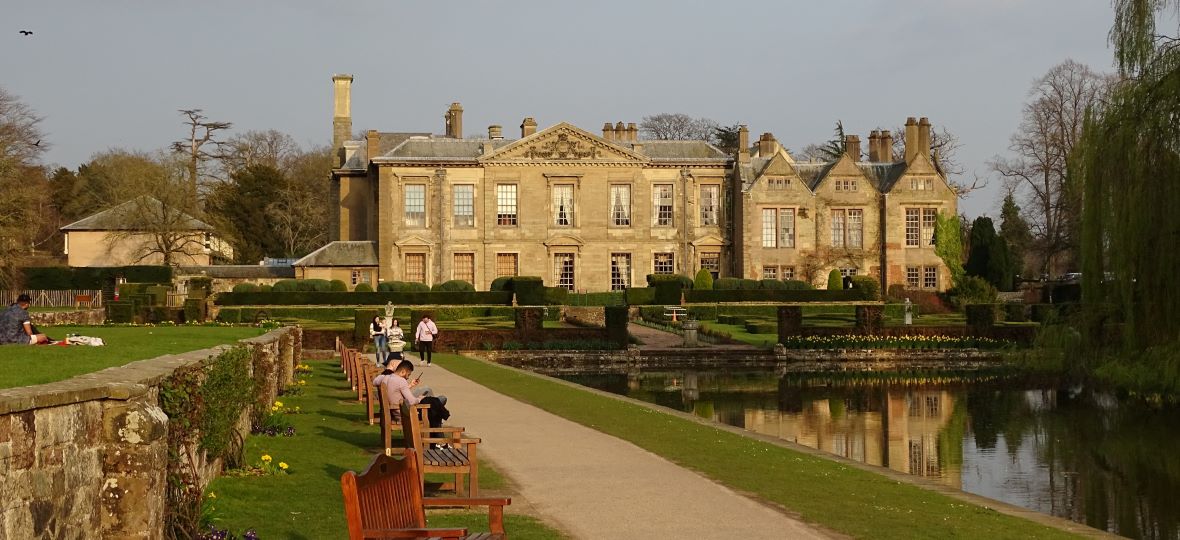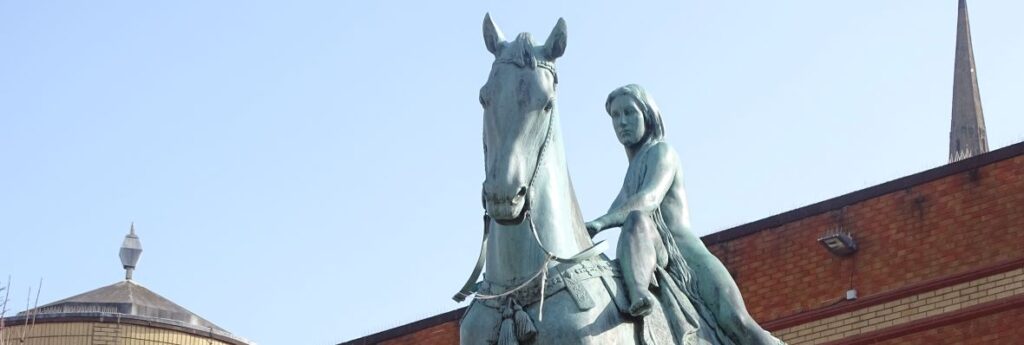Let’s be honest, Coventry doesn’t always jump out at travellers plotting a path through Britain’s more familiar towns and regions. Pity. The West Midlands city has much to recommend it, from a famous cathedral to being the home of British automobile manufacturing (including giants like Jaguar and Triumph), plus historic links to a little lady called Godiva.
Located a stone’s throw from “big sister” Birmingham (think Hamilton to Toronto), Coventry is enjoying a moment in the sun as a British City of Culture and is poised for further international recognition when this summer’s Commonwealth Games roll into the region (July 28-Aug. 8).
Visitors (or those glimpsing the city while watching the Games on TV), will discover Coventry is a pleasant place that belies its industrial past and has plenty to interest and entertain visitors, or those just passing through.
The one-time capital of England has a rich, medieval heritage (including striking architecture), vibrant shopping and food and drink scene, and sits the middle of leafy, green Warwickshire (Shakespeare country).
But residents also exude community spirit and are proud of their progressive social history as well.
“Coventry is a really special, unique city,” says Chenine Bhathena, Creative Director of Coventry City of Culture, who notes the city’s role in the international peace movement and as a “city of sanctuary and reconciliation”; as a forerunner in the environmental movement; home of novelist George Elliot, who championed women’s rights; and birthplace of “two-tone” music (and bands like The Specials and Madness) during a time of racial reckoning in the 1970s and ‘80s, among other attributes.
She adds that the city is “fantastically diverse” and a “city of many cultures (where) we like to celebrate the way everybody has helped make the city what it is.”
Compact and walkable, the city is centred around the Cathedral Quarter and the Broadgate public square. Both are integral reconstructions in a city that was devastated by 44 bombing raids by Nazi Germany in World War II, including “the big one” on Nov. 14-15, 1940.

That bombing raid destroyed the city’s spectacular gothic cathedral, which was rebuilt without reservation (completed 1962), becoming a symbol of “resistance and peace.”
The new Coventry Cathedral has been voted one of Britain’s most popular 20th century buildings and is home to a show-stopping 25-metre-long stained glass window, which floods the interior with brightly coloured light, giving the modern space an ethereal feel. Uniquely, modern art, including a massive tapestry by Graham Sutherland, adorn the structure, which also has Canadian connections. Visitors can climb 180 steps up to the top of the cathedral tower for sweeping views across the city. Situated beside the ruins of the original, the site attracts many thousands of visitors each year.
Other notable city sites include:
St. Mary’s Guildhall: One of the finest medieval buildings of its kind in England. Having stood proudly for almost 700 years, it once acted as a jail for Mary Queen of Scots and provided inspiration for George Eliot. The grand building is complete with stone carvings, wooden ceiling and a magnificent restored 10-metre-long religious tapestry dating back to the 1500s.
Three Spires: Coventry is known as “the city of three spires” with the Old Cathedral of St. Michael, Christchurch (Greyfriars), and the Holy Trinity Church (with its spectacular and rare examples of medieval doom paintings), comprising the holy trinity.
Lady Godiva: Coventry’s favourite famous daughter (banner photo) was a real 10th-century figure, memorialized with a cast bronze statue in 1949 in the centre of Broadgate Square (don’t worry, it’s family friendly). A prominent gentlewoman in her time, Godiva protested against oppressive government taxes (imposed, ironically, by her husband) by riding a horse across town in the buff, covered only by her long hair, into legend. The term “peeping Tom” similarly gained infamy for the fellow who refused to politely turn his back and not look as she passed by. The annual Godiva Festival will take place this September.

Transport Museum: Motor enthusiasts, and even those who aren’t, can start their engines in Coventry’s Transport Museum, which houses the world’s largest publicly owned collection of British road vehicles and record-breaking fast cars. Reflecting the city’s historical reputation as the “Detroit of Britain,” the museum boasts hundreds of exhibits, from antique bicycles (invented in Coventry) to war vehicles, fire engines, double decker buses, race cars, and land-speed rockets. There’s also a collection of miniatures, and, of course, classis cars from local companies, including 16 stunners you could only dream of owning in the Jaguar gallery.
FarGo Village: After a short stroll from city centre along colourful Far Gosford Street, with its Penny Lane vibe and oddly inordinate number modern barbershops, the city’s creative flare emerges at FarGo Village, an artistic space that champions all things local. As well as foodie festivals and vibrant pop-ups, there are a host of unique local shops, eateries, the Twisted Barrel Brewery pub, and artistic studios in the Fargo Marketplace, all set within a repurposed industrial site.
Canal Basin: A stroll here gives a glimpse into Coventry’s industrial past. Once a buzzing centre for the coal industry, it is now laden with colourful narrowboats, rejuvenated warehouses full of quirky crafts and an art trail.
Home of two-tone: As the birthplace of two-tone music, which brought together Jamaican Ska and punk in 1970s and ‘80s Britain, Coventry’s musical heritage is undeniable. Genre-defining bands such as The Specials, Madness and The Selecter have strong links to the city, all of which are celebrated at 2-Tone Village, which also houses the Coventry Music Museum and the city’s Music Wall of Fame, alongside quirky fashion and record shops.

Coombe Country Park: Less than 10 km from the city centre, the former 12th-century Cumbe Abbey (founded in 1150) is an expansive 200-hectare site designed by England’s most famous landscape designer, Lancelot ‘Capability’ Brown. Visitors (admission is free, parking for a fee) can discover rich woodland and tranquil fishing lakes, or up the ante at the GoApe outdoor activity centre, complete with treetop challenges, dual zip wires and Tarzan swing.
Coombe Abbey: For a quarter of a century, luxurious onsite Coombe Abbey has been a hotel, retaining the original manor house structure’s unique nooks and crannies, and welcoming guests to its 120-plus rooms, which come in all manner of shapes and sizes. Non-guests can stop in for afternoon tea or at the restaurant and bar.
Thanks to its City of Culture status, Coventry has seen significant investment in infrastructure with newly designed public spaces and railway systems, cultural institutions and outdoor artworks, and a new boutique hotel (The Coventry Telegraph Hotel, converted from the city’s iconic Telegraph newspaper building).
Situated in the heart of England, the city is also an ideal gateway, or base, for discovering neighbouring Birmingham, the Black Country Museum in Dudley; Stratford-Upon-Avon; Royal Leamington Spa; the market towns of Warwickshire, including Rugby, and Kenilworth; and Warwick Castle. It is also 90 minutes by direct train from London (Euston Station), making for an easy daytrip (in either direction).

